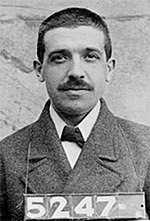A Ponzi scheme is a fraudulent investment operation that involves promising or paying abnormally high returns ("profits") to investors out of the money paid in by subsequent investors, rather than from net revenues generated by any real business. It is named after Charles Ponzi, His aliases include Charles Ponei, Charles P. Bianchi, Carl and Carlo.
In December 2008, former chairman of the NASDAQ Stock Market, Bernard Madoff, was arrested and charged with a single count of securities fraud, but one which "may rank among the biggest frauds ever" totaling "$50 billion of fraudulent loses."
A Ponzi scheme has similarities with a pyramid scheme though the two types of fraud are different.
What is The Ponzi scheme?
an idea which others would later, independently, invent as the Yellow Pages. Ponzi, unfortunately, was unable to sell this idea to businesses, and his company failed soon after.
A few weeks later Ponzi received a letter in the mail from a company in Spain asking about the catalog. Inside the envelope was an international postal reply coupon (IRC), something which he had never seen before. He asked about it and found a weakness in the system which would in principle allow him to make money.
Ponzi canvassed friends and associates to back his scheme, offering a 50% return on investment in 45 days. The great returns available from postal reply coupons, he explained to them, made such incredible profits easy. He started his own company, the Securities Exchange Company, to promote the scheme.
Some people invested, and were paid off as promised. The word spread, and investment came in at an ever-increasing rate. Ponzi hired agents and paid them generous commissions for every dollar they brought in. By February 1920, Ponzi's total take was US$5,000, a large sum for the time.






